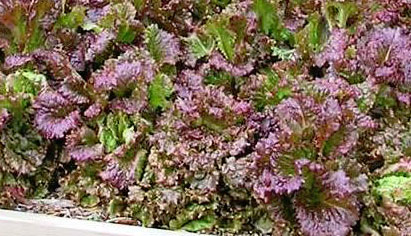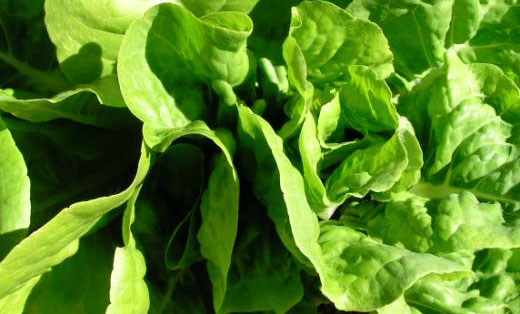Fall Veggies Are Cool To Grow In North Escambia Area
August 14, 2010
In Northwest Florida, vegetable lovers can enjoy harvests from their backyard gardens throughout the year. However, to ensure a productive and enjoyable vegetable garden, you must understand and abide by planting times.
 In general, vegetable crops can be grouped into warm-season and cool-season varieties. Warm-season crops do not grow well at temperatures below 50 degrees F and are killed by frost. Cool-season crops are those that grow at lower temperatures, are not injured by light frost, but can’t take the heat.
In general, vegetable crops can be grouped into warm-season and cool-season varieties. Warm-season crops do not grow well at temperatures below 50 degrees F and are killed by frost. Cool-season crops are those that grow at lower temperatures, are not injured by light frost, but can’t take the heat.
In late summer and early fall, North Florida gardeners experience a unique opportunity. You can still plant another round of warm-season crops and/or start your cool-season vegetables.
Planting of warm-season vegetables gets to be more critical with the fall garden because we have an end point—frost and freezes. When planted too late, plants will grow, but may not provide enough of a harvest to make the effort worthwhile. Examples are peppers, eggplants and tomatoes. These vegetables can easily take up to two months from transplanting to producing the first fruit. All the time, the fall is getting shorter in day length and cooler in temperatures. That’s really tough on “warm-loving,” full-sun plants.
Since timing is so important with the fall crop, choose warm-season crops that will produce well within a short time. Look for fast-maturing and determinant or bush-type cultivars to ensure a good yield before frost.
Crops to plant outdoors in August include bush and lima beans, cauliflower, collards, cucumbers, onions, southern peas, peppers, squash, tomato and turnips.
In September, you can set out beets, broccoli, cabbage, carrots, endive, kale, kohlrabi, mustard and radish.
The cooler temperatures of October are better for planting Chinese cabbage, lettuce and spinach.
 To find specific recommendations on when to plant vegetables in Florida, read the UF/IFAS “Vegetable Gardening Guide”. It’s online at edis.ifas.ufl.edu/vh021
To find specific recommendations on when to plant vegetables in Florida, read the UF/IFAS “Vegetable Gardening Guide”. It’s online at edis.ifas.ufl.edu/vh021
The leafy crops excel in the fall. Some of the more popular leafy crops are Swiss chard, collards, spinach, mustard, turnip greens and lettuce. Endive, escarole, kale, arugula and the greens of mesclun mix also do very well during the cooler months.
Garden lettuces can be divided into three classes based on habit of growth – leaf or loose-leaf types, semi-heading types (such as butterhead and romaine) and heading or crisp-head types.
Crisp-head lettuces, such as the iceberg types available in supermarkets, are more of a challenge to grow here, so its recommend you stay with the leaf and semi-heading varieties. Other than generally avoiding the heading types, feel free to try just about any variety that strikes your fancy.
Leaf lettuces are the most decorative and least-demanding. They also are among the most heat-tolerant lettuces. This type of lettuce grows in a loose rosette of foliage, and the leaves can be smooth or crinkled, pointed, lobed, curled or ruffled. Foliage color runs from deep ruby red to dark green to pale greenish yellow, with just about every combination in between.
Collards will withstand wide ranges of temperatures if properly conditioned. They may be direct seeded and or plants can be transplanted. Collards may be harvested by cutting the whole plant or by “cropping” individual leaves.
Onions are generally grown from sets or plants. Sets and plants will require about six to eight weeks to reach eating size. Bulbing onions will not be ready to harvest until spring.
Radishes are fast growers and fun for the kids. Many are ready to harvest 25 to 30 days after planting.
So take the leap and “fall” into vegetable gardening.
Theresa Friday is the Residential Horticulture Extension Agent for Santa Rosa County
Comments
6 Responses to “Fall Veggies Are Cool To Grow In North Escambia Area”




interested in info. On winter veggies am in nw fl thanks
I have 20 acres wanting to plant something I can sell at market for fall and winter any good tips thanks
Planted turnips last weekend I m hoping they ll turn out well it s my first time planting them
Please continue to give good tips on planting
Thanks!!!!!
Our swiss chard did great earlie this summer, and it looks like our eggplant is taking off now. Thanks for the tips! Keep them coming!
It’s worth trying some of the Chinese vegetables which, for some reason, are seldom mentioned in lists like the above. Also, I’ve found that heirloom tomatoes and other heirloom vegetable seeds, available from catalogs on line are often superior to commercial types. Commercial vegetable seeds are often designed for shelf life, not flavor and nutritional value. One scuppernong sized tomato produced bite-sized fruit even beyond the first frost despite weeds all around it. You save those seeds, believe it.
Also, greens grown in containers are often more pest free and can be brought indoors to avoid severe cold. We’ve become fond of an Asian mustard called Tatsoi, which provides greens as mild and tasty as spinach all winter in a container outside here in Escambia county Alabama.
I believe we are had better start a garden in the times we are in now!!!!!!!!!!!!!!!!!!